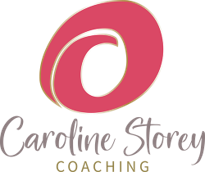How do you know when it’s time to take a break?
It can be so easy to get caught up in the busy-ness of life.
To keep going, even when we feel exhausted.
To bounce from high to low with the support of sugar and caffeine.
To not even realise that we need to stop until it’s too late.
The topic of how to manage energy - both physical and mental - has come up a lot in coaching recently.
How to be productive without burning out?
How to know when to push on and when to take a break?
And how to do so in a sustainable way?
It’s a topic that’s close to my heart.
A lot of my personal life lessons have been about energy management. They have been painful ones at times!
I haven’t been great at managing my energy, or knowing when to stop before I’m running on empty.
Over time I’ve got to know my brain and my body, worked out what works for me, and put support structures in place to take the thinking out of it.
It’s the approach I take when coaching on this, and there are 3 steps that can be super useful to explore.
1) Self-Awareness | Get to know your energy levels.
Notice what your energy feels like over time - where is it on a scale of 1-10 right now? How has it changed from this morning? What does a 7 feel like? How about a 4? How do you know where you are? Our body and brain hold such wisdom if we listen to them.
One client logged their level regularly for a couple of days. It really helped identify when their energy was highest, and which type of activities drained it faster. We then worked on a plan which included...
2) Switch activities | What are your go to low power activities?
When it’s time to take a break, it helps to have some easy reach, low power activities to switch to. Mine are re-reading favourite fiction, working on a puzzle, going to a yoga class, even putting the kettle on - something that slows me down and gives my brain enough to focus on without draining me.
One client has a list of ‘comfort zone’ work tasks, another ‘putters’, another watches YouTube videos or plays a word game. Everyone has different things that help their brain and body relax and recharge. It’s super useful to know your menu of options. Then you can add…
3) Scheduling | Let technology be your friend.
When we’re not great at knowing when it’s time to take a break, scheduling is a gift - and for me, a game changer. I now have fixed coaching slots, with gaps in between, and movement and fresh air built into my day. It takes away the effort of working it out each day.
One client schedules in reminders for snacks, another works on high power and low power days, another plans a movement and journalling session half way through the day. It’s about making it the default rather than leaving it to chance.
Getting to know how our energy works, and then working with it, sounds simple. And yet we can run on autopilot without paying attention until something makes us.
It’s such a great investment of time to get to know what works for us, and we don’t have to figure it all out on our own - I’ve had a lot of help along the way and I’m still learning!
How do you know when it’s time to take a break?
And what would be your go to switches and support structures?
Wishing you all a week of balanced energy,



